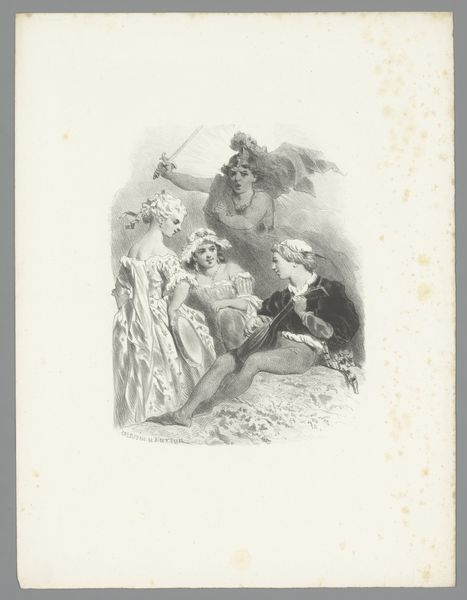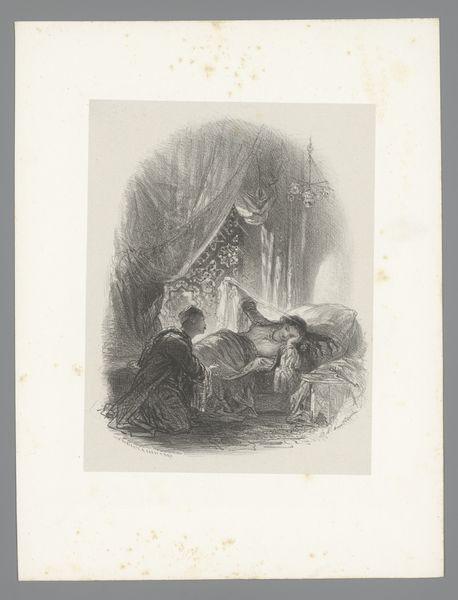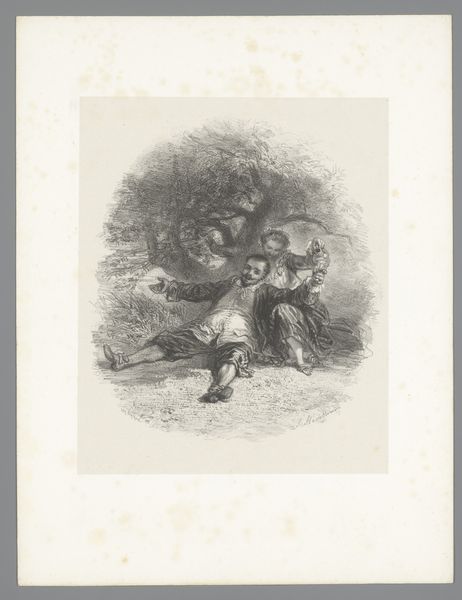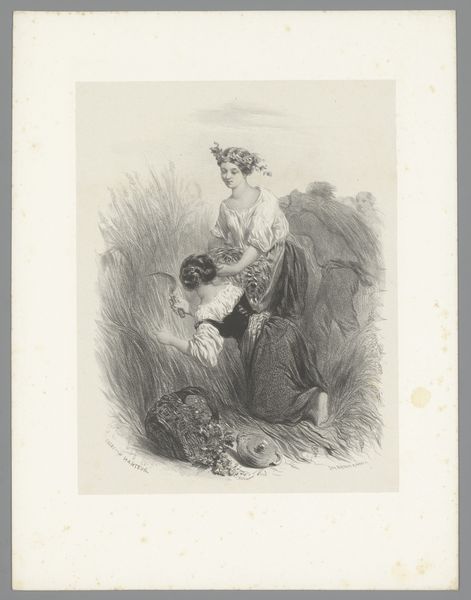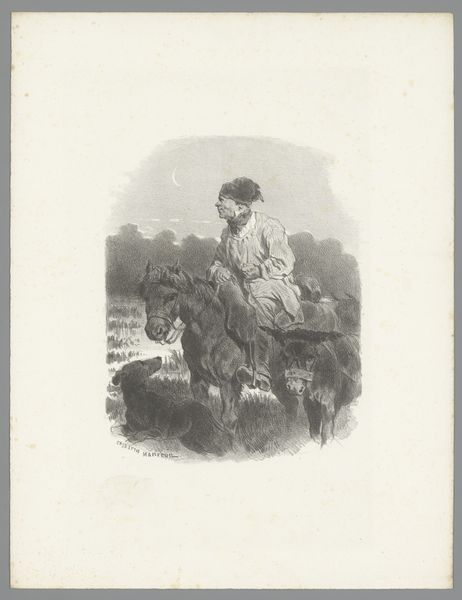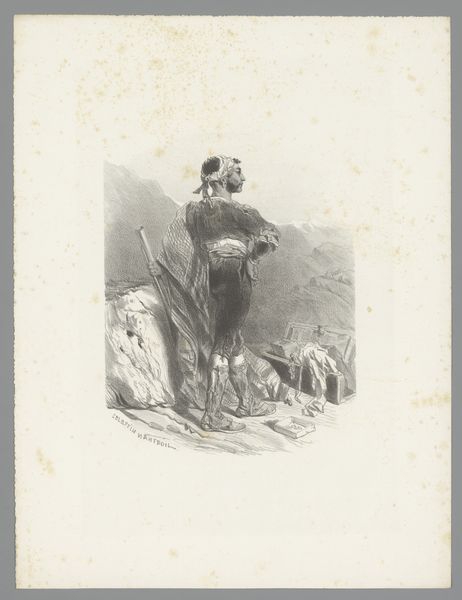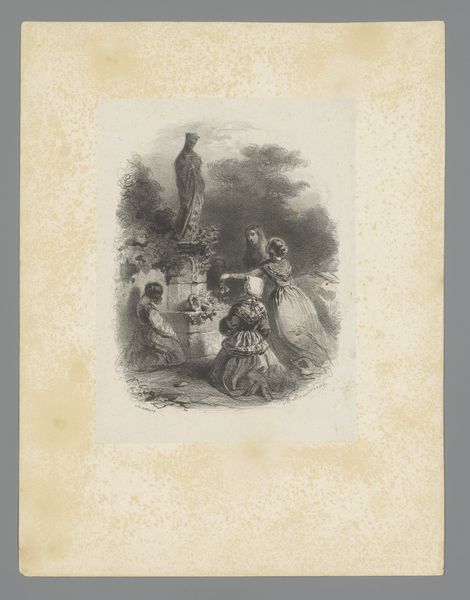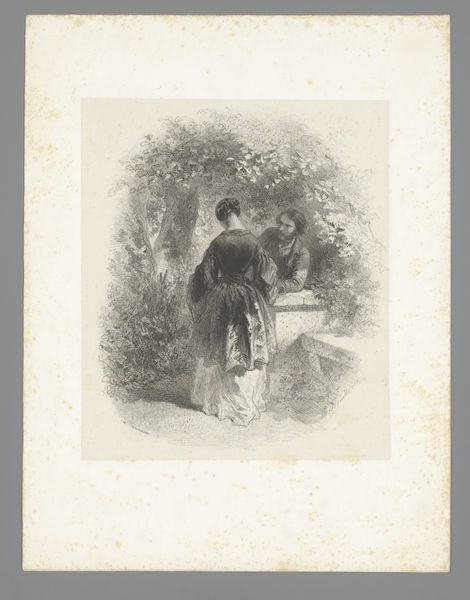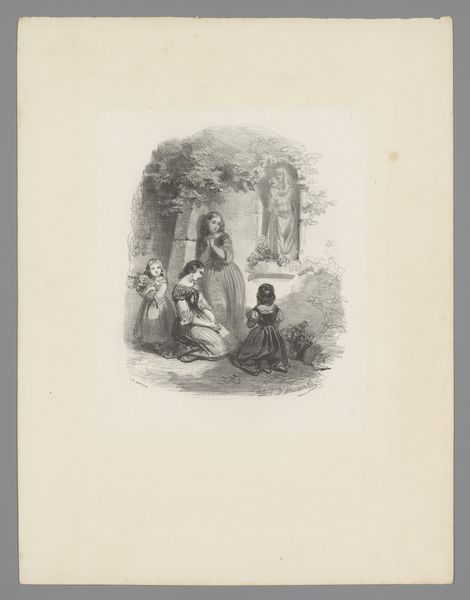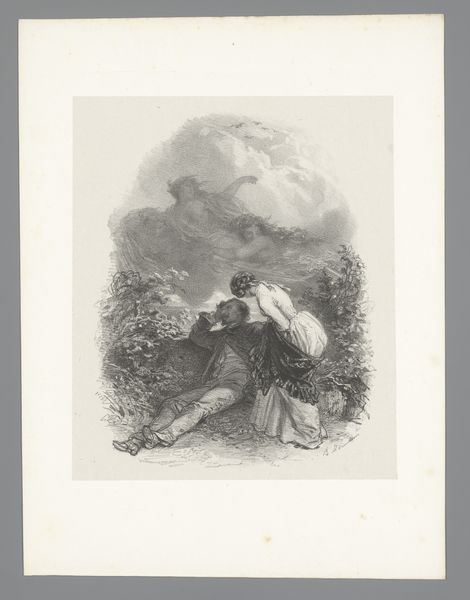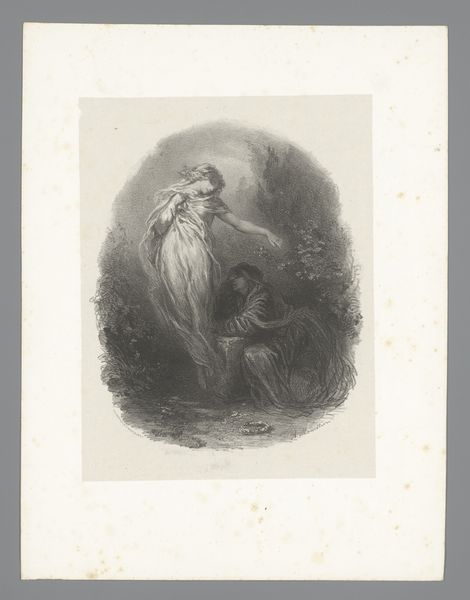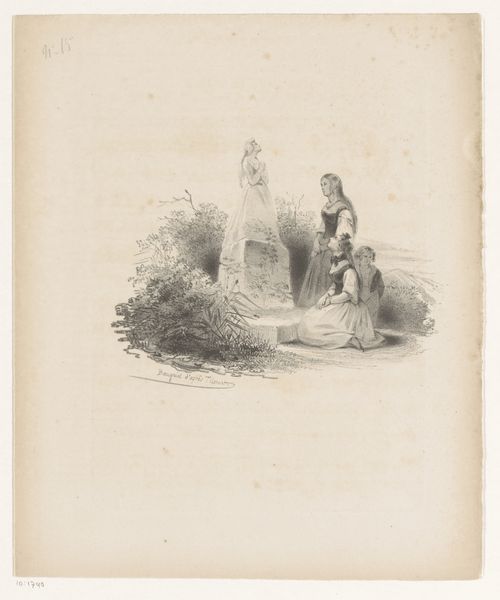
drawing, print, pencil, engraving
#
drawing
# print
#
pencil sketch
#
landscape
#
figuration
#
pencil
#
sketchbook drawing
#
genre-painting
#
academic-art
#
engraving
#
realism
Dimensions: height 361 mm, width 275 mm
Copyright: Rijks Museum: Open Domain
Curator: It's immediately striking how raw this print feels. I mean, look at the frenetic energy in the lines; it feels less like a polished piece and more like a direct capture of a moment. Editor: We’re looking at a print titled "Boer standing next to two cattle," attributed to Célestin Nanteuil, likely created sometime between 1823 and 1873. It appears to be a print, made from an engraving after a pencil sketch. Curator: I am very drawn to that textural contrast. The burly cattle, meticulously rendered, next to what feels like rapidly sketched vegetation; it really shows Nanteuil's grasp of process and variation. Were prints like these typically seen as autonomous works or reproductive aides during this period? Editor: That's an interesting question! While many prints functioned as reproductions, disseminating images to a wider public, there was also a growing appreciation for the print as an art form in its own right. The rise of printmaking societies and dedicated exhibitions signaled this shift. So the social context is crucial, we see a developing artistic sphere and also printmakers testing the definition of "Art". Curator: Absolutely. I can imagine this print, specifically, circulated amongst agricultural communities or even displayed in a rural setting, given the humble, labor-focused subject matter. It also emphasizes certain roles like that of farmers to reinforce cultural and societal beliefs. Editor: I find the social messaging particularly fascinating. Look how Nanteuil depicts the Boer – a working-class subject – not in grand, idealized terms, but with a degree of realism, bordering on, dare I say, indifference. I think the choice of subject reflects growing public interest in portraying everyday life and rural scenes accurately. Curator: You know, seeing how Nanteuil used the print-making process for these rustic genre paintings highlights how the perception of “fine art” shifted over time and how new social contexts made art accesible to lower classes. Editor: Indeed, examining Nanteuil's techniques within their social milieu allows for a richer understanding. I appreciate your perspectives! Curator: Likewise, the discussion clarified its processual choices and cultural function to me.
Comments
No comments
Be the first to comment and join the conversation on the ultimate creative platform.
